So long, 2019 NFL draft. What a wild ride throughout Rounds 1-7, with some quarterback surprises, trade drama and several top prospects who slipped out of the first round.
So which team had the best class?
A reminder: What I do here is assess two main things, using my own player grades as the prism:
How effectively did teams address key personnel holes?
How efficient were they in maneuvering on the draft board?
I've graded every team for this draft, with plenty of A's and B's to go around, along with a handful of C's. No one received a D or an F.
Let's go from best class to worst class, with teams with the same grades in alphabetical order. Check out Todd McShay and I discussing these grades on ESPN2 at 7 p.m. ET on Sunday. Click the links below to go directly to your favorite team's grade:

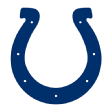
Indianapolis Colts: A
Top needs: wide receiver, edge rush, cornerback
How about the job Chris Ballard has done as general manager of the Colts? He absolutely crushed the 2018 draft, finding stars and helping catapult Indy to a 10-6 record and a playoff berth after going 4-12 in 2017. This roster has a ton of young talent. Ballard also landed an extra second-rounder from the Jets in the Sam Darnold trade last year, and that pick ended up at the very top of Round 2 in 2019. That's good team-building, and the Colts had some very specific needs to fill this weekend. How did Ballard do? I love this class from top to bottom.
Ballard moved out of Round 1, picking up an extra 2020 second-rounder in going from No. 26 to No. 46, which meant Indy had three second-round picks. And I really liked all four of Indy's Day 2 picks. I was surprised that cornerback Rock Ya-Sin (No. 34) made it out of the first round, but only one corner went in the first 32 picks. He is a little raw, but I think he'll start immediately. Wide receiver Parris Campbell (No. 59) is a burner, but he also caught 90 passes last season and improved every year. He'll play some slot and also scorch corners out wide. Bobby Okereke (No. 89) was my fourth-ranked inside linebacker, and he could compete with Anthony Walker for that starting spot. Defensive end Ben Banogu (No. 49) is a really good fit in Matt Eberflus' 4-3 scheme.
That's all three needs filled on Day 2. There were also some intriguing additions on Day 3, particularly in safety Khari Willis (No. 109), who I ranked as my No. 50 overall prospect. He broke up 10 passes last season and will be an impact special-teams contributor. Safety Marvell Tell III (No. 144) is a good athlete with a 6-foot-2 frame. Javon Patterson (No. 246) made 39 college starts at guard but will likely move to center.
Ballard & Co. have done it again. This is my favorite draft class.

Cincinnati Bengals: A-
Top needs: linebacker, offensive line, quarterback
It's tough to know what to think about the Bengals in 2019. While longtime coach Marvin Lewis is gone and Zac Taylor is now in charge, Mike Brown still runs things. That means the team is going to build through the draft and not worry much about free agency. In fact, Cincinnati didn't make many notable moves, other than parting ways with Vontaze Burfict and re-signing its own guys. After a 6-10 finish last season, is this team better?
This is not a sexy class, but it's solid throughout. Jonah Williams (No. 11) is a no-brainer immediate starter, either at guard or tackle. Germaine Pratt (No. 72) is a converted safety who will likely end up at outside linebacker in Cincy's 4-3. The versatility makes it good value. I didn't love Ryan Finley's tape as much as Todd McShay -- he gave Finley a second-round grade -- but Andy Dalton shouldn't be locked in long term, so this is another option for Taylor if Dalton underwhelms. To get Finley at No. 104 is solid.
Drew Sample (No. 52) is a really good blocking tight end, but even he didn't expect to go in the second round. That was high with more complete tight ends available. Renell Wren (No. 125) had an up-and-down career for the Sun Devils, but he impressed at the Senior Bowl and has some intriguing athletic traits. I'm intrigued by the Day 3 running backs with Trayveon Williams (No. 182) and Rodney Anderson (No. 211). Anderson is one of the most talented backs in the class, but he simply couldn't stay on the field. Williams is going to help spell Joe Mixon in the receiving game. Jordan Brown (No. 223) is a good corner for the seventh round.
Williams and Sample are the only surefire early starters, but there's some upside with Finley and the Day 3 running backs. This group will help Taylor navigate his first year on the job.

Cleveland Browns: A-
Top needs: defensive back, offensive tackle, inside linebacker
In March, I gave the Browns an A when I re-graded the 2018 draft. GM John Dorsey has them on the right track after years of ineptitude; they haven't made the playoffs since 2002. This offseason has continued that momentum, with the free-agent signing of Sheldon Richardson and trades for Odell Beckham Jr. and Olivier Vernon. This should be a playoff team in 2019.
Cleveland didn't have a Round 1 pick because of the OBJ trade -- I know Browns fans are perfectly fine with that -- so Dorsey needed to do work on Day 2. He did that with his first pick, taking super-talented cornerback Greedy Williams (No. 46), who dropped because his tape raises issues about his tackling. I believe in Williams' talent, though, and the stinger he suffered early last season contributed to a down year. He could be a starter opposite Denzel Ward. Elsewhere, the Browns added linebacker Sione Takitaki (No. 80), who will compete for Jamie Collins' vacant spot. They got good value in safety Sheldrick Redwine (No. 119) and inside linebacker Mack Wilson (No. 155). Wilson was my third-ranked inside linebacker. Round 5 is too high for a kicker, though, and I had an undrafted grade on Austin Seibert.
A big part of this class has to be OBJ, a genuine superstar. That gets at least a half-letter bump. Meanwhile, Williams is already guaranteeing a Super Bowl berth. If that happens, I might be giving out another A or A+ in the re-grades. Let's see what Baker Mayfield has in Year 2.
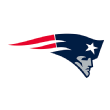
New England Patriots: A-
Top needs: tight end, wide receiver, quarterback
The Super Bowl champs have been drained of talent this offseason. Trent Brown, Trey Flowers, Rob Gronkowski, Cordarrelle Patterson, Dwayne Allen, Chris Hogan and Malcom Brown, among others, are all gone. Quibble all you want with the level of impact of some of those guys. Bottom line: That's a lot of snaps to fill. The Patriots, of course, always plan ahead.
They are the best team in the league at building through the draft, and they entered 2019 with six picks in the first three rounds. They also essentially get rookie seasons from two top picks from last year's class, with Isaiah Wynn the favorite to fill Brown's spot at left tackle, and cornerback Duke Dawson in line to contribute in the slot.
So it should be no surprise that I like what Bill Belichick did this weekend. Wideout N'Keal Harry (No. 32) has the best hands in this class. He will be a weapon in the red zone. Outside linebacker Chase Winovich (No. 77) is a versatile edge player and a great fit for Belichick's multischeme defense. Yodny Cajuste (No. 101) is raw -- he played just one year of high school football -- but has some upside as a potential down-the-road starter at offensive tackle. Damien Harris (No. 87) is underrated as a runner, though he might not play many snaps with Sony Michel and Rex Burkhead ahead of him on the depth chart.
Belichick also used some of that capital to move up for Joejuan Williams at No. 45, giving up Nos. 56 and 101 to get him. Williams is a rare 6-foot-4 cornerback and had first-round tape in 2018; he dropped because he ran a curiously slow 4.64-second 40 at the combine. I thought he needed to land in the right scheme, and I wouldn't be shocked to see Belichick match him up on tight ends early in his career.
They also handed O-line coach Dante Scarnecchia a guard prospect with upside in Round 4 in Hjalte Froholdt (No. 118). The track record with that strategy is excellent. Jarrett Stidham (No. 133) can make Round 1 throws and can also throw Round 7 interceptions. This is an excellent upside developmental play behind Tom Brady. Byron Cowart (No. 159) was a five-star recruit at Auburn before transferring to Maryland. He has some tools. Belichick also got Jake Bailey (No. 163), my top-ranked punter.
There are a lot of needs filled here, and if Harry, Williams and Winovich can get on the field early, I feel good about this being one of the draft's best classes from top to bottom.

Washington Redskins: A-
Top needs: quarterback, edge rush, offensive line
Alex Smith's leg injury last fall was extremely unfortunate. You have probably forgotten that the Redskins were 6-4 with a healthy Smith, then went 1-5 after he got hurt. They easily could have won the NFC East, and the entire theme of the offseason would have changed. This team has talent. Now, Washington has an onerous contract for Smith on its books, and it's unclear when -- if ever -- he'll play again. That means quarterback was the priority for this team.
Once the Redskins opted to trade for veteran Case Keenum as a stopgap option, we knew the first round was a possibility for owner Daniel Snyder and GM Bruce Allen to target a quarterback. So it's funny that all of the talk was about trading up ... and Dwayne Haskins fell right into their laps at No. 15. As I wrote on Thursday night, I love the fit here. Haskins has a chip on his shoulder, and he's a gamer. He never wilted under pressure for the Buckeyes, and he was at his best in the biggest games. I'm excited to see what coach Jay Gruden and new offensive coordinator Kevin O'Connell can do with him.
The Redskins then traded back into Round 1, surrendering the No. 46 pick and a second-round pick in next year's draft to move up to No. 26 for pass-rusher Montez Sweat, who was ranked No. 12 overall on my board. Yes, that's a lot to give up, but I really like Sweat, who could have been a top-10 pick if not for a heart condition that caused him to drop. I spoke to people from teams that had removed him entirely from their draft boards, and I spoke to other team representatives who had him in the top 10.
After that, Washington focused on depth, and there were some names that popped for me. Terry McLaurin (No. 76) is a speed demon who I thought could go early in the second round. And he already has experience with his Buckeyes teammate Haskins. You probably know about Bryce Love's Heisman runner-up 2017 season, but he had a down 2018 due to injuries and tore his ACL in December. This could be a redshirt year. Still, to get him at No. 112 is decent. Guard Ross Pierschbacher (No. 153) and linebacker Cole Holcomb are solid fifth-round guys who will make the team. Jimmy Moreland (No. 227) has some physical tools to work with, though he's going to need time to adjust to the speed of the NFL.
After a turbulent end to the season, this team is back on track. Haskins and Sweat, two top-12 prospects on my board, push this class over the top.
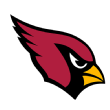
Arizona Cardinals: B+
Top needs: wide receiver, offensive line, tight end
Even as recently as a week ago, I wondered whether the Cardinals were really going to do this. Were they really going to take a quarterback in the top 10 two years in a row? It only happened once before, when the Colts took Art Schlichter No. 4 overall in 1982, then took John Elway first in 1983. It really is pretty wild. Then you think about the Arizona offseason, and you see exactly why this could happen. Steve Wilks was one and done as coach after a horrendous 2018 season that began with Sam Bradford as the starter (seems like ages ago). Enter Kliff Kingsbury, who went 35-40 in six years at Texas Tech but undoubtedly can coach up an offense. His Air Raid offense needs a particular set of skills at quarterback.
That's why I can't crush the Cardinals for taking Kyler Murray No. 1. I get it. He's the best fit to help Kingsbury succeed, as I wrote on Thursday night, and that means the whole organization succeeds. Still, this team is going to struggle in 2019 and Murray will run for his life at times. The Cardinals have holes all across the roster, and there's a reason they were picking No. 1 in the first place. But Murray is going to give the fan base a jolt, and he's going to make some plays.
As for the rest of the class, I liked GM Steve Keim's picks on Day 2, even if I don't love the process. The haul in the Josh Rosen trade -- No. 62 and a fifth-rounder in 2020 -- has to sting, but Keim & Co. put themselves into this mess. It's stunning that the No. 10 overall pick from last year couldn't fetch more in a trade, especially on a cheap rookie deal, but there are just not many teams that need quarterbacks. Byron Murphy (No. 33) finished as my top-ranked corner, so Arizona should have a starter at the top of Round 2. Wide receiver Andy Isabella, now forever linked with Rosen, will help Murray, as I wrote Friday night. He's a big-play receiver with a small 5-foot-9 frame. And defensive lineman Zach Allen, who could play end or put on a few pounds and play tackle, was a nice pick at No. 65.
Arizona got more help for Murray to start Day 3, taking Hakeem Butler (No. 103), a massive 6-foot-5 athlete with great ball skills but only so-so route running. If he can get coached up, this could be a steal for Kingsbury's system. KeeSean Johnson (No. 174) also has some interesting physical traits as an outside receiver. Safety Deionte Thompson (No. 139) fell to Round 5, but he is talented enough to start as a deep safety. And Mr. Irrelevant, Caleb Wilson (No. 254), also has some receiving skills.
So you can see that the Cardinals are trying to build around Kingsbury and Murray and putting a team together that suits this offense. This is a strong start.

Baltimore Ravens: B+
Top needs: Guard/center, wide receiver, linebacker
This has been an offseason of change for the Ravens. Among the starters who have moved on: Joe Flacco, Terrell Suggs, Eric Weddle, C.J. Mosley, Za'Darius Smith, John Brown and Michael Crabtree. There is also a new GM with Ozzie Newsome stepping down and longtime lieutenant Eric DeCosta taking over. And the quarterback change is significant, as this is Lamar Jackson's team now, which means a different style of offense. When Jackson took over last season, the offense looked similar to when Colin Kaepernick thrived in San Francisco, and that's no coincidence. Greg Roman is the Ravens' offensive coordinator after years under Jim Harbaugh with the Niners.
Wide receiver is the position that could most help Jackson in 2019, and that's exactly where Baltimore went in Round 1, snagging the best receiver in the class in Marquise Brown (No. 25) after trading down three spots and adding a couple of Day 3 picks. Baltimore also added a really good athlete in wide receiver Miles Boykin (No. 93). He only had one consistent year at Notre Dame, but the skill set (4.42-second 40 at 6-foot-4) jumps out.
Jaylon Ferguson (No. 85) might bulk up to play end in the Ravens' 3-4. I like the value there for the NCAA's all-time leading sacker (45 in his career). Justice Hill (No. 113) is a good complementary piece to Mark Ingram at running back. He's an exceptional athlete who had a down 2018 because of injuries. Ben Powers (No. 123) could compete for the starting guard spot. Daylon Mack (No. 160) is extremely strong at the point of attack. If he's motivated, he can be a strong anchor at defensive tackle. Trace McSorley (No. 197) is an interesting prospect as some teams saw the former Penn State quarterback as a safety.
Jackson's development is so crucial to this team. If he's improved as a passer, it will be partially because Brown and Boykin helped him get there. I like what DeCosta did in trying to upgrade around the quarterback.
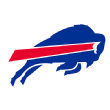
Buffalo Bills: B+
Top needs: Defensive tackle, tight end, wide receiver
The offseason priority in Buffalo was clear: help second-year quarterback Josh Allen. He was up and down in Year 1, but it was tough to fully evaluate him as the offense didn't have much talent overall, particularly at receiver and tight end. GM Brandon Beane added wide receivers John Brown and Cole Beasley plus tight end Tyler Kroft to give Allen some better targets. The Bills also reshuffled their offensive line, with definite upgrades at center (Mitch Morse) and right tackle (Ty Nsekhe) and a few other low-cost moves.
That's why I liked what Buffalo did with its first four picks, using three on players who will directly make Allen's life easier. They reportedly liked Cody Ford enough to try to trade into the first round, but they ended up getting the guard/tackle at No. 38. He's a mauler in the run game, and I thought he could go in the top 20 picks. That's a steal. The 5-foot-7 Devin Singletary (No. 74) won't be a LeSean McCoy replacement, but he has some burst as a complementary player. Tight end Dawson Knox (No. 96) is all about projection -- he only had 15 catches last season. But his measurables (6-4, 254) and testing numbers pop.
It says a lot that I've written this much and haven't mentioned Ed Oliver, the Bills' No. 9 overall pick, who I thought Thursday was trending toward the top five. He won't directly help Allen, but he'll make the quarterback's life easier. Oliver is the perfect replacement for underrated defensive tackle Kyle Williams, who retired this offseason, and he'll wreck some games as a 3-technique in Sean McDermott's defense.
Tight end Tommy Sweeney (No. 228) is a good blocker but not an athlete. Jaquan Johnson (No. 181) piled up tackles for the Hurricanes but ran a 4.69-second 40 at the combine.
This was a really solid first two days, headlined by Oliver, though I was surprised there was no receiver in the class. If Knox becomes a threat in the receiving game -- and if Allen keeps developing -- I like where the offense is headed.
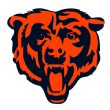
Chicago Bears: B+
Top needs: Running back, defensive back, tight end
This draft class is Khalil Mack. Simple as that. And do you think Bears fans are OK with that? I do. Chicago went 12-4 under new coach Matt Nagy last season, thanks to a dominant defense led by Mack. Now, the haul was massive; Chicago gave up its first-round picks in 2019 and 2020, plus a third-rounder this year and a sixth-rounder next year, and got back Mack and 2020 second- and fifth-rounders. That looks like an even bigger deal when you see the trade compensation for stars like Antonio Brown and Odell Beckham Jr. But Mack is different -- he changed the entire defense.
So keep that in mind when you see that Chicago didn't pick until No. 73, where it landed running back David Montgomery, a bulldozer at 222 pounds. With Jordan Howard gone, expect Montgomery to get early touches here, and keep an eye on Kerrith Whyte Jr. (No. 222), who sat behind Devin Singletary at FAU but is a stellar return man. Riley Ridley (No. 126) is an excellent route-runner, not unlike his brother, Calvin, though Ridley isn't as explosive. That's a solid value pick and a guy who could help Mitchell Trubisky.
So, yes, it's tough to get a complete handle on a class with only five picks, but when one of those counts as the most dominant edge rusher in the game, we'll give them a slight pass. What keeps this from an "A" for me is not getting a safety. But maybe they think Ha Ha Clinton-Dix, who got a one-year deal this offseason, is the long-term answer.
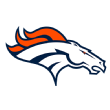
Denver Broncos: B+
Top needs: Tight end, linebacker, quarterback
Denver has missed the playoffs three years in a row after winning that Super Bowl in Peyton Manning's final season, and GM John Elway has had some notable quarterback misses. Trading up into the first round in 2016 for Paxton Lynch was a disaster. Case Keenum was one and done a year ago. And now Elway & Co. have used the 2019 offseason to try to settle the position in the short- and long-term under new coach Vic Fangio and offensive coordinator Rich Scangarello.
The Broncos traded for Joe Flacco in a cheap deal; he has no more guaranteed money on his contract. And they drafted Drew Lock in Round 2 in a sneaky-good move that puts Flacco on notice for the second straight year after Baltimore took Lamar Jackson in the first round in 2018. I thought Lock, a four-year starter with a huge arm, could have gone in the top 10; I know he was there on some teams' boards. He got caught up in the quarterback musical chairs, however, and might have ended up in the perfect spot.
It's also important to note that the Broncos only had two second-round picks because of a smart move on Day 1. With Pittsburgh itching to move up to No. 10, Denver dropped down 10 spots and added No. 52 and a 2020 third-round pick. Elway then used that 52nd pick to move up 10 spots in the second round to add Lock and didn't forfeit a ton of ammo. That's a good move.
It says a lot that I have praised the Broncos' third pick in the class and haven't even mentioned the two guys who went ahead of him. Noah Fant (pick No. 20) is a 6-foot-4 athletic freak who will help as a pass-catcher in Year 1. He won't block yet -- he's essentially a big slot receiver -- but that could come in time. And we know how much Flacco loves to throw to tight ends. Dalton Risner (No. 41) is the rare offensive lineman who could play tackle, guard or center. He might be a favorite to begin his career at guard.
Dre'Mont Jones will likely play end in Fangio's 3-4 defense, but he is already advanced as an interior penetrator. Justin Hollins (No. 156) is going to contribute as a pass-rusher.
All in all, getting two really good players before the player who could be the future quarterback feels like a win for Elway.

Pittsburgh Steelers: B+
Top needs: Cornerback, inside linebacker, wide receiver
In January, in my Mock Draft 1.0, I slotted in Devin Bush to the Steelers at No. 20. It was an easy decision -- yes, I'm patting myself on the back -- as Pittsburgh has struggled to replace the production of star inside linebacker Ryan Shazier. But then Bush ran a 4.43-second 40-yard dash and tested off the charts at the combine. He also killed his interviews with teams. There was no way he was going to be available in the 20s.
That's why I like GM Kevin Colbert moving up 10 spots to get a potential superstar in Bush at No. 10. Yes, it cost a lot -- they gave up pick 20 and 52 plus a third-rounder in next year's draft -- but Bush can be an impact player and leader in Pittsburgh. And oh, yeah: The last time Pittsburgh traded up in the first round to take a defender? It was 2003, when they moved up 11 spots for safety Troy Polamalu.
Elsewhere, Pittsburgh added a wide receiver with the pick it got in the Antonio Brown trade. Diontae Johnson (No. 66) actually reminds me a little bit of Brown on tape, but he's not an elite athlete. We obviously can't expect him to be close to Brown, but if he gets into the rotation as a rookie, that's a win. The Steelers really like second-year wideout James Washington, a second-rounder a year ago. Cornerback Justin Layne (No. 83), a converted receiver, could be a starter as a rookie. I thought he had a chance to go in the top 40 picks. Sutton Smith (No. 175) is a little undersized, but he landed in a good spot with a 3-4 team.
My affection for Bush is well-known, obviously, and I think he can be a superstar lynchpin for this team. Layne, too, is a great value pick at a need position. Now, can Pittsburgh overtake Cleveland in the AFC North?

Atlanta Falcons: B
Top needs: Defensive tackle, cornerback, offensive line
When Atlanta played in Super Bowl LI and Matt Ryan was the league MVP, none of the five offensive linemen in front of the quarterback missed a single start. Not one. Injuries and declining play hit the Falcons' offensive line last season, however, and the team made it a priority to upgrade in free agency, signing guards James Carpenter and Jamon Brown. Then the Falcons went and drafted two more offensive linemen in Round 1 on Thursday, adding my top-ranked guard Chris Lindstrom at No. 14, then trading up to get tackle Kaleb McGary at No. 31.
That's a lot of offseason capital used on offensive linemen, particularly since that trade up for McGary means Atlanta had zero picks on Day 2, but I like that Atlanta is addressing a weakness and helping its franchise quarterback. That's more than I can say for another team with two picks (sorry, Packers fans).
So, with no pick until the fourth round, that caps the ceiling for this grade. Cornerback Kendall Sheffield (No. 111) is a speed demon who tore his pectoral in March and could miss some training camp. If he puts it all together, he could be an NFL starter. John Cominsky (No. 135) is a solid defensive end. Taking two running backs -- Qadree Ollison (No. 152) and Marcus Green (No. 203) means some more help for Devonta Freeman and Ito Smith, and both will be special-teams contributors.
I like that Atlanta addressed its biggest need in a big way, but with limited picks, it's tough to go much higher. If Ryan has a career year -- and another MVP -- we'll know it paid off.
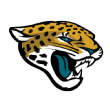
Jacksonville Jaguars: B
Top needs: Offensive line, tight end, wide receiver
The Jaguars went 5-11 last season, but you can't really blame the front seven. In fact, Jacksonville led the NFL in pressure percentage, pressuring the quarterback on 34.8 percent of dropbacks, even though they were in the bottom third in the league in total sacks. This is a defense that should be really good in 2019. Think 2017 levels.
So consider me shocked to see elite pass-rusher Josh Allen still available at No. 7. That just tells you how deep this defensive line class is -- he was the fourth-ranked prospect on my board -- as teams think they can find value in Rounds 2 and 3. The Jags pounced, though, and they could end up with a 12-sack-per-season edge rusher to pair with Yannick Ngakoue (due a big contract soon) for years to come. This is one of the best front sevens in the league, especially if they can get a resurgent season from 2018 first-round pick Taven Bryan.
As I wrote Friday night, getting Jawaan Taylor at No. 35 is huge, as he fills an immediate need at right tackle. He fits exactly what Tom Coughlin wants from this team in front of new quarterback Nick Foles. Ryquell Armstead (No. 140) is a good, reliable running back who could compete for carries with Leonard Fournette. Tight end Josh Oliver (No. 69) is a good value pick on Day 2.
My qualms with this class are two-fold: Where was the receiver? Foles already doesn't have the greatest options. I also thought Quincy Williams (No. 98) going in the third round was about two rounds to high, though he could be a contributor in time. He's just so, so raw.
Still, getting Allen and Taylor makes this a rock-solid "B."
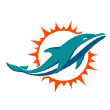
Miami Dolphins: B
Top needs: Quarterback, defensive line, offensive line
Miami is undergoing a complete rebuild this offseason. It might have the least-talented roster in the league after Ja'Wuan James, Robert Quinn, Cameron Wake, Danny Amendola and Ryan Tannehill, among others, departed. It has needs at almost every position. New GM Chris Grier has started the rebuild in the right way, though, stripping spare parts (and big contracts) and starting fresh while picking up future assets, like a 2020 second-round pick from the aggressive Saints on Friday.
And since we thought the Dolphins were more interested in the 2020 quarterback class -- they passed on both Dwayne Haskins and Drew Lock in Round 1 -- the low-risk trade for Josh Rosen makes an awful lot of sense. They gave up just a late second-round pick (No. 62) and a 2020 fifth-rounder to add a supertalented signal-caller who went No. 10 overall a year ago. He's also on a cheap deal for the next few years with his signing bonus already paid, so even if he's not the long-term answer, it will be easy to move on. I wouldn't rule out Miami still being in the 2020 QB sweepstakes, but I like the Rosen deal.
Miami added an underrated interior pass-rusher in Christian Wilkins at No. 13 overall, and for a team desperate for sacks, he will provide a boost. He's also going to be a great locker-room presence. Michael Deiter (No. 78) was my third-ranked guard, but he started games at tackle, center and guard for the Badgers. Isaiah Prince (No. 202) is a sneaky candidate to start at one of the tackle spots. Myles Gaskin (No. 234) was extremely productive in college, but you wonder what all those carries have done to his body.
Again, this is going to be a long process for the Dolphins, and they're just beginning. This draft will be remembered for the Rosen deal, but Wilkins could be a steal.

Minnesota Vikings: B
Top needs: Offensive line, wide receiver, defensive tackle
Mike Zimmer wants to run the ball. Just ask former offensive coordinator John DeFilippo, who was fired in the middle of last season, as Minnesota finished 27th in rushes per game (22.3) and 30th in rushing yards per game (93.3) in 2018. That's why Zimmer brought in assistant head coach Gary Kubiak and run game coordinator Rick Dennison, who plan to implement a zone-blocking scheme. Will it help Kirk Cousins? That's the hope. But the Vikings need better offensive linemen, first and foremost.
So it was pretty clear to see how excited the entire draft room was on Thursday when Garrett Bradbury was still on the board at No. 18. The team thinks he's the perfect fit to play center in this new scheme, with Pat Elflein moving over to guard. Bradbury has outstanding footwork, and he played well at Senior Bowl practices. And if you can believe it, he's the first interior lineman the Vikings have drafted in Round 1 since Hall of Famer Randall McDaniel in 1988.
The Vikes had nice days on Friday and Saturday. Tight end Irv Smith Jr. (No. 50) could put Kyle Rudolph's future in Minnesota in jeopardy. Dru Samia (No. 114) will join the battle for one of the open guard spots. Todd McShay tried to get me to move up Alexander Mattison (No. 102) this past week, and with Dalvin Cook's injury history, the team needed a backup plan. Armon Watts (No. 190) has a massive 6-foot-5 frame and will join the defensive line rotation. I also liked cornerback Kris Boyd (No. 217) in Round 7, as he joins a talented secondary that includes former Longhorn teammate Holton Hill.
With Cousins in Year 2 of a three-year deal, the Vikings need to win now. This is a solid class with a few pieces to help do that.
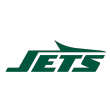
New York Jets: B
Top needs: Edge rush, wide receiver, tight end
This was a really quiet weekend for the Jets. They got their guy early on Thursday, and they mostly kept to themselves. After all the talk that the Jets wanted to trade out of the No. 3 spot to add more picks, taking Quinnen Williams was a great consolation prize. You could make the case that he is the best overall player in the class, but the positional value at defensive tackle is less than quarterbacks and edge rushers. He will thrive in Gregg Williams' attacking, hybrid defense as an elite interior disruptor.
This class has to get dinged at least slightly because of how much GM Mike Maccagnan gave up in the trade to get Sam Darnold last year, which cost the team three valuable second-round picks, including the No. 34 pick this year. They obviously hope Darnold is worth it, but it's not like this team is without needs. There's a reason they are consistently drafting in the top 10.
Maccagnan did get an extra third-round pick by trading Teddy Bridgewater last year, and the two third-rounders are decent values. Jachai Polite (No. 68) has first-round tape but he bombed the combine and his athleticism (and work ethic) is in question. Still, you don't get 11 sacks in the SEC without some talent. Chuma Edoga (No. 92) played right tackle for the Trojans, but he might move inside to guard. I rated Trevon Wesco (No. 121) as my top H-back in the class, and he's a ferocious blocker who's just a little undersized at 6-foot-3, 267 pounds. He will likely move to tight end full time. Blessuan Austin (No. 196) had some injury issues in college, but if you can get him on the field, he's a solid player.
Defense was the priority, and Williams is going to be a Defensive Rookie of the Year candidate. If Polite can show what he did on the field last season, the Jets have something.
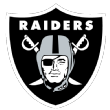
Oakland Raiders: B
Top needs: Edge rush, running back, cornerback
There's a lot going on here. Even before you get to the players they added in the actual draft, remember they added some of these picks because they don't have the services of Khalil Mack, a dominant All Pro pass-rusher. That said, they also flipped picks for Antonio Brown, who turns 31 in July but is still playing at a Pro Bowl level. Got that part? How about the players.
Overall I'd say Mike Mayock and Jon Gruden teamed to add a lot of talent, with just one big question mark on working the draft board.
As for the picks, Clelin Ferrell is a high-character, high-productivity combo. He leaves Clemson with 50.5 tackles for loss and 27 sacks and figures to factor immediately. (The Raiders had 13 sacks last season ... Mack had 12.5). Josh Jacobs (No. 24) was the No. 1 running back in the class and is plug and play. Exit Beast Mode, enter Jacobs. Johnathan Abram (No. 27) is a Gruden special -- an intimidator who will make you feel it as a tackler. These were all clear needs and in my estimation immediate starters.
Then you have Trayvon Mullen (No. 40), also a Gruden type who is a physical corner who makes plays, and another long corner in Isaiah Johnson. They're good players at a big need spot. Maxx Crosby (No. 106) could be a pass-rushing sleeper out of Eastern Michigan, and Foster Moreau (No. 137) and Hunter Renfrow (No. 149) also hit need areas at tight end and in the slot.
The big head-scratcher here was taking Ferrell at No. 4 instead of taking the light risk of moving down and taking him later. I suspect he would have been around. Gruden is gonna get the guy he covets, and that's clearly Ferrell, but there's no question in my mind they flushed a little board value there.
Overall you have to like the talent influx from the draft class. They loaded up on power-program, tested talent. They hit a pile of needs, though they had plenty to hit. The reality is they needed it, and what AB and Mack do over the next two years will factor into the long-term grade.

Philadelphia Eagles: B
Top needs: Safety, offensive tackle, defensive line
Philadelphia had to fill its needs in this draft with just seven total picks. That's tough. It actually ended up trading out and finished with just five picks. GM Howie Roseman has had a nice offseason by efficiently filling holes with deals for Malik Jackson, Vinny Curry, DeSean Jackson and Jordan Howard. In other words, the Eagles haven't overspent. That's important as they get ready to give Carson Wentz a massive contract.
I thought safety might be a target in Round 1 with Malcolm Jenkins entering his age-32 season. The secondary was depleted by injuries in an up-and-down 2018 season. But I also thought offensive tackle made a ton of sense based on where the Eagles were picking (No. 25) and how the board might fall. Stalwart left tackle Jason Peters is 37, and they needed to decide whether Lane Johnson is being an elite right tackle or a good left tackle.
That's why I wasn't surprised to see the Eagles make sure to get their guy by trading up three spots and grabbing Andre Dillard at No. 22. He's a true left tackle and the best pass protector in the class. He's the heir apparent to Peters. But the trade was also costly for a team with limited capital, as Philly also had to give up fourth- and sixth-round picks. It needed to have a solid Day 2, which included an extra second-round pick from the Ravens as part of the trade to get Lamar Jackson last year.
That's what the Eagles did. I'm a big fan of both of these second-round picks. Running back Miles Sanders (No. 53) and wide receiver JJ Arcega-Whiteside (No. 57) both made the list of my favorite prospects by position. Sanders, Saquon Barkley's backup for two years, has limited tread on his tires and can help in the passing game. Arcega-Whiteside could put Nelson Agholor's future in question -- he's a red zone threat with solid separation skills. Defensive end Shareef Miller (No. 138), who had 15 tackles for loss last season, fits coordinator Jim Schwartz's attacking style. And Clayton Thorson (No. 167) can be a decent No. 2 or 3 quarterback behind Wentz.
So, yes, I like what Roseman & Co. did this weekend, but it's tough to say it's stellar with just five picks. I do expect Philly to be a playoff team again in 2019.

Seattle Seahawks: B
Top needs: Wide receiver, defensive back, defensive line
The Seahawks had a problem. They were staring at a deep draft, and they had just four picks total, two of them in Round 1. That extra first-rounder came via the trade of Frank Clark to Kansas City earlier in the week in which they also added a 2020 second-rounder. So again ... deep draft, four total picks. They also were trying to figure out how to plan for a future that might not involve Doug Baldwin. Serious challenges here.
And John Schneider went to work, somewhat masterfully. Seattle now walks away having made 11 picks, perhaps most impressively, seven of them before the end of Round 4. General managers all over the league were excited about the middle rounds, and Seattle loaded up. In doing so they hit some big needs and addressed the wideout questions in doing so.
First-rounder L.J. Collier (No. 29) could be something of a Michael Bennett clone if he develops right. He has a chip on his shoulder and the coaches love him. He's extremely stout against the run. Earl Thomas is gone and the secondary makeover continues with the addition of Marquise Blair (No. 47). He's an excellent fit for Seattle's scheme and should push for immediate playing time. Linebacker Cody Barton (No. 88) could arguably play every linebacker position and adds depth. Remember, Seattle allowed 4.95 yards per carry last year. Collier and Barton help.
As for the wide receiver question: You can question the agility testing of DK Metcalf (No. 64), but at the end of Round 2 for a big-bodied burner? That could pay off big. And Gary Jennings (120) in Round 4 is also big and fast. These are legit downfield targets for Russell Wilson. The guard box was checked with Phil Haynes (No. 124). Local linebacker Ben Burr-Kirven (No. 142) can play. Running back Travis Homer (No. 204) worked out really well at the combine.
Overall, impressive work from Schneider and Pete Carroll to extract so much value.
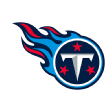
Tennessee Titans: B
Top needs: Defensive tackle, tight end, outside linebacker
The Titans really don't want to be graded, do they? A year after only making four draft picks, they had just six this year, among the fewest in the league. They also took one of the biggest mysteries in the draft, as top pick Jeffery Simmons (No. 19) could take a redshirt year because of a torn ACL suffered in February. Based on talent alone, he might have been a top-five pick. But there's also the defensive tackle's off-field issues, which factor into the boards for every team. If Simmons gets healthy, he could be a steal in time. Right now, though, it's tough to say he's going to do much for Tennessee, which thinks it's a playoff team in 2019.
I liked the pick of wide receiver A.J. Brown in the middle of Round 2 (No. 51). With Marcus Mariota in a contract year, it's important to surround him with weapons to figure out whether they want to invest $100 million guaranteed. Brown could be a solid No. 2 receiver. Nate Davis (No. 82) started at guard for three seasons in college before playing right tackle as a senior. His best spot at the next level is inside. Amani Hooker (No. 116) is a solid deep safety who will contribute on special teams. D'Andre Walker (No. 168) is toolsy, but you wonder why he didn't produce at Georgia.
And so the Titans had 10 draft picks over the last two classes, which means it has to comb the undrafted free agent field for under-the-radar finds. Simmons is the most important prospect here, even if we don't know his true impact until 2020. This is a steady (and small) group of players I like.
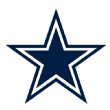
Dallas Cowboys: B-
Top needs: Defensive tackle, wide receiver, safety
The Cowboys got a great rookie season from first-round pick Leighton Vander Esch a year ago, and the defense took a step forward under Rod Marinelli and Kris Richard as they won the NFC East and a wild-card game. But there were still holes, particular at defensive tackle and safety. Remember that Dallas hasn't made the playoffs in consecutive seasons since 2006-07. And with no first-rounder because of the trade for Amari Cooper (Jerry Jones is OK with that deal, no matter what Cooper's new contract look like), it had to fill those needs on Day 2. Did it do that?
I'm not so sure. Defensive tackle Trysten Hill was a reach at No. 58, but I see why Marinelli might like him. He has a great motor and some physical traits, but you wonder why he didn't produce consistently in the AAC. I had a fourth-round grade on him. I would have gone safety with Taylor Rapp, Juan Thornhill and Nasir Adderley still on the board. There was good value with my second-ranked guard Connor McGovern at No. 90, and he could be insurance for Travis Frederick at center, too. The ESPN draft projection system thought highly of him.
Dallas took two running backs on Day 3 -- Tony Pollard (No. 128) and Mike Weber (No. 218) -- and there was a quiet need for someone to spell Ezekiel Elliott. Jalen Jelks (No. 241) flashed top-50 talent but never put it all together. He has measurables that make the seventh round a steal.
To not get a safety until the sixth round made me scratch my head a little bit -- that was such a glaring need. Let me ask you: Did Dallas get any immediate starters here? Cooper doesn't count. Hill is an enigmatic player, and Pollard is more of a luxury pick. I do like taking McGovern and making sure the offensive line stays a strength of the team.
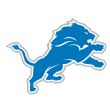
Detroit Lions: B-
Top needs: Defensive end, cornerback, offensive line
The Patriots' influence is real in Detroit. GM Bob Quinn and coach Matt Patricia, of course, both spent years working alongside Bill Belichick, and this offseason has seen the Lions add some players directly from the Belichick catalogue. Pass-rusher Trey Flowers, drafted by Belichick, got a huge deal in Detroit. Danny Amendola, who spent five seasons catching passes from Tom Brady, signed with the Lions on a short-term deal.
And then the Lions took in Round 1 the tight end they hope will be their Rob Gronkowski in T.J. Hockenson, one of the most pro-ready tight ends I've scouted in the last decade. He's advanced as a blocker -- he consistently piledrives edge defenders -- and will contribute in the passing game, lined up in the slot or outside the tackle. My comp for him has been longtime Steeler Heath Miller, a really good player. Hockenson is the third tight end the Lions have drafted in the first round since 2009, the most by any team in that span.
Elsewhere, you know Belichick likes versatile defenders, and these picks fit the style Patricia wants to play in Detroit. Jahlani Tavai (No. 43) is a tackling machine. I had a fourth-round grade on him. Will Harris (No. 81) ran a 4.41-second 40 at the combine and will be in the rotation at safety. Austin Bryant (No. 117) went under the radar among Clemson's supertalented defensive line, but he's a steady end who will thrive in a 4-3. I also like the value of Amani Oruwariye (No. 146) and Travis Fulgham (No. 184) on Day 3.
All in all, this is a solid if unspectacular class. If there's an issue, it's about not addressing the other defensive end spot in Round 2 with some good players on the board.
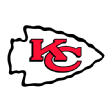
Kansas City Chiefs: B-
Top needs: Cornerback, offensive line, defensive line
This is a tough class to grade for a team that made sweeping changes on defense. Coordinator Bob Sutton is out, and Steve Spagnuolo is moving to a 4-3. Gone are impact players Dee Ford, Justin Houston, Eric Berry and Steven Nelson. The Chiefs brought in Frank Clark, Tyrann Mathieu, Bashaud Breeland and Alex Okafor. It's really tough to know exactly how it will play out, but it was clear something had to change on defense after Patrick Mahomes and the offense broke records all season.
The cost for Clark was exorbitant; K.C. gave up a first-round pick this year (No. 29) and a second-round pick next year, plus gave a huge contract. If he gets 10-plus sacks a season, he'll be worth it. But that has to factor into the draft grade. We also don't know what's going to happen with Tyreek Hill, who is being investigated by police and might not be on the roster much longer. The Chiefs' first pick on Friday -- wideout Mecole Hardman at No. 56 -- makes you think he is a backup plan for Hill, and they are similar players.
I did like the Chiefs' next two picks. Juan Thornhill (No. 63) has the versatility to play safety or cornerback, and he won't overlap with Mathieu's skill set. There was value in Khalen Saunders (No. 84) in Round 3 as a defensive tackle who could play next to Chris Jones. Darwin Thompson (No. 214) averaged almost 7.0 yards per carry last season.
Paying big for Clark hurts this class -- he has to produce in order for it to be a good deal. Thornhill and Saunders are my guys, though, so I'm not going to drop it too low.

Los Angeles Rams: B-
Top needs: Defensive tackle, safety, offensive line
The Super Bowl runners-up entered the draft with noticeable voids from the departures of defensive tackle Ndamukong Suh and safety Lamarcus Joyner, and they were poised to make their first Round 1 pick since they selected Jared Goff No. 1 overall in 2016. That didn't happen. Here are the trades the Rams made before they picked this weekend:
Dealt No. 31 to Atlanta for Nos. 45 and 79.
Dealt No. 45 to New England for Nos. 56 and 101.
Dealt No. 56 to Kansas City for Nos. 61 and 167.
That's GM Les Snead dropping down 30 spots and picking up two extra third-round picks and a fifth-rounder (they also gave a sixth-rounder to Atlanta), an excellent example of using his board to pick up more capital. And so with top nose tackle Dexter Lawrence off the board early, it made sense for the Rams to see how the safety class shook out. Taylor Rapp fell into their lap at No. 61. I expect him to see the field early and often, though he's not a straight replacement for Joyner. His 4.74-second 40 at this pro day was a big red flag, but I love his tape.
L.A. used some of its capital to move up for running back Darrell Henderson (No. 70) and get some Todd Gurley II insurance. Henderson is a big-play back with a small, 5-foot-8 frame, and he will be a good change-of-pace complement to Gurley. Bobby Evans (No. 97) is a right tackle prospect with some upside. David Long (No. 79), who ran a 4.45 at the combine, isn't a ball hawk, but he's a steady and reliable corner. The 312-pound Greg Gaines (No. 134) could be a candidate to replace Suh, but he's only a two-down player.
Adding the extra picks saves this class from dropping to the "C" range, and I think Evans is a good player, too.
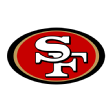
San Francisco 49ers: B-
Top needs: Wide receiver, defensive back, offensive line
There were two big improvements for GM John Lynch and the Niners this offseason:
Reloading the front seven. This is a defense that set NFL records for fewest takeaways (seven) and interceptions (two) in a season. Trading for Dee Ford will boost the edge rush, while free-agent signing Kwon Alexander will man the middle linebacker spot. And now taking the No. 1 overall player on my board in Nick Bosa gives San Francisco two really, really talented pass-rushers to wreak havoc and force some turnovers on the outside while DeForest Buckner causes interior pressure.
Getting Jimmy Garoppolo some weapons. If Garoppolo is healthy, this is a team that could make some noise in the NFC West. But he needed better pass-catchers, which is why I like the Niners taking Deebo Samuel (No. 36) and Jalen Hurd (No. 67) on Day 2. Samuel is the best slot receiver in the class, while Hurd is a 6-foot-5 athletic specimen who's still learning the intricacies of running routes. Add those receivers to a depth chart with Marquise Goodwin and Dante Pettis, and you like the upside. (Don't forget Tevin Coleman, who was a nice free-agent signing.)
The fourth round was far too high for Lynch to take punter Mitch Wishnowsky (No. 110) -- he finished No. 294 on my board -- but a need is a need. I would have thought they'd target one of those safeties early on Day 3 instead. Kaden Smith (No. 176) ran really slow at the combine (4.92) but before that I thought he had a chance to go in Round 3. Getting him in Round 6 is good value.
I like the direction the 49ers are going, even if I don't love all of these picks.
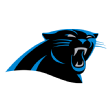
Carolina Panthers: C+
Top needs: Edge rush, wide receiver, offensive tackle
It seemed clear leading up to the draft that Carolina was going pass-rusher or offensive tackle with its first pick. At defensive end, Mario Addison (nine) and Julius Peppers (five) were the only Carolina defenders who had more than four sacks last season. Peppers is now retired. At tackle, there's some uncertainty around Daryl Williams' health and Taylor Moton's ideal position.
And so GM Marty Hurney stuck to his board and got edge rusher Brian Burns, who I thought could go in the top 10. He needs to add some weight to his 6-foot-5, 249-pound frame to play end in a 4-3 defense, but he already has a stellar first step. He's explosive off the edge. He is going to be asked to play early and often, along with free-agent signing Bruce Irvin.
My issues with this class come in Rounds 2-7. Offensive tackle Greg Little (No. 37) is an underachiever. He has all the talent in the world, but teams question his work ethic. If -- a big if -- Carolina can get him going, it could have a steal. I wouldn't have taken him at the top of the second round, though. Quarterback Will Grier (No. 100) was an interesting pick, and it makes a lot of sense based on Cam Newton's injury history. Ideally, the Panthers never want to see Grier take a snap; they hope Newton stays healthy. But he's a solid insurance policy. Dennis Daley (No. 212) is a lumbering tackle with a low ceiling, while Jordan Scarlett (No. 154) is extremely inconsistent.
If Burns is a 10-sack-per-season player, this class could work out. But questions remain, even if I admire the Panthers for addressing needs.
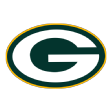
Green Bay Packers: C+
Top needs: Wide receiver, tight end, offensive line
The Packers faced a conundrum here. They had one of the worst handful of defenses in the NFL last season, but there are those of us who see help for Aaron Rodgers as a need. In this draft, the needs on defense won out, though Rodgers did get one helpful toy.
They used both first-round picks on defensive players, and now have used their last eight first-round picks on defense. Rashan Gary (No. 12) made sense where they got him, and while Darnell Savage Jr. (No. 21) might be a slight reach, he fills an obvious need. When you factor in an aggressive free-agency period, Green Bay could turn over a pile of starters on defense, and probably for good reason.
Help for Rodgers came in other forms. Center Elgton Jenkins (No. 44) could be a starting interior lineman Week 1, and Jace Sternberger (No. 75) is yet another of a handful of midround tight ends in this draft who you'd think would go earlier in some other years. There were just so many big-bodied pass-catchers in this draft. Going back to defense, Kingsley Keke (150) could rotate in early along the revamped defensive line, and Ka'Dar Hollman (No. 185) looks like a press corner possibility.
Over the next three seasons, Rodgers will represent a salary cap hit of $26.5 million, $32.6 million and $33.5 million. Rodgers is worth the money, but as is tradition around here, let's ask again: does the investment get maximized with the current receiving help? The strategy in this draft as it was in free agency seems to suggest the Packers realized it wouldn't matter how brilliant Rodgers is if he's stuck on the bench because the defense can't get opposing offenses off the field.

Houston Texans: C+
Top needs: Offensive line, running back, wide receiver
When I played general manager earlier this month and did a three-round "Grade: A" mock draft, I wrote that Houston should use two of its first three picks -- it has an extra second-round pick as part of the Duane Brown trade with Seattle -- on offensive linemen. The need was that great. Obviously Brian Gaines felt the same way as he and the Texans took tackles at No. 23 (Tytus Howard) and No. 55 (Max Scharping) to try to help a porous line that allowed 62 sacks and a 41 percent pressure rate last season, which both ranked last in the league.
My issue here? Both were reaches on my board. I had third-round grades on each, and they were my eighth- and 10th-ranked tackles, respectively. It's particularly rich for Howard, who is extremely raw. He was a 6-foot-3, 235-pound high school quarterback five years ago, and now he's a first-round offensive tackle. I said on air that his ceiling is Terron Armstead, but that's if he maxes out all of his talent. There's still a ways to go. Scharping has more seasoning, as he started 53 games on the right side for the Huskies.
Cornerback Lonnie Johnson Jr. (No. 54) will compete for early playing time in a new-look secondary, while Kahale Warring (No. 86) has a ton of talent. He's raw. Charles Omenihu (No. 161) didn't test well at the combine and grades out as a rotational player. I'm curious why Houston didn't target a receiver on Day 3, too.
You can see what Gaines and the Texans did with this class, as these are toolsy prospects. I just have to quibble with value.
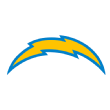
Los Angeles Chargers: C+
Top needs: Offensive tackle, defensive tackle, defensive back
The Chargers made the playoffs last season, their first appearance since 2013, and a big part of their defensive resurgence can be traced back to 2018 first-round pick Derwin James. He solidified all areas of the defense, as L.A. ranked ninth in the league against both the run (105.8 YPG allowed) and pass (227.9). GM Tom Telesco -- who has had a really good run of first-round picks, with four of his last five making Pro Bowl teams -- obviously hopes his first pick in 2019 does the same.
The Chargers were gashed up the middle in the playoff loss to New England, and defensive tackle was a clear need this weekend. So while I see exactly why they took Jerry Tillery at No. 28, my only objection is over the value of where it took him. He is the very definition of a boom-or-bust prospect. I watched every one of his games at Notre Dame, and there was a lot of up-and-down play. He had eight sacks last season, yes, but four came in a dominant performance at Stanford. Why can't he dominate on a consistent basis? I ranked him No. 56 overall on my board.
I did like Telesco's second pick, safety Nasir Adderley (No. 60). He complements James' skill set well as a ball hawk who can play the deep middle of the field as well as any safety in this class. Trey Pipkins (No. 91) was a reach on my board at the end of the third round; he snuck onto my final top 300 at No. 299. The Chargers were decimated at linebacker at the end of the last season, so Drue Tranquill (No. 130) is a decent depth option. Easton Stick (No. 166) isn't going to be Carson Wentz, but if he's a serviceable backup, that's fine in Round 5.
Adderley should be an immediate starter, and Telesco will hope that Tillery doesn't miss time due to his torn labrum. If Tillery plugs the leaky middle of the defense, the Chargers will be thrilled.
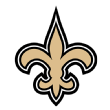
New Orleans Saints: C+
Top needs: Wide receiver, offensive line, cornerback
The Saints just do things a little bit differently than the other 31 teams. That has worked out OK the last few years -- they were this close to a Super Bowl LIII berth last season. A quick recap of how GM Mickey Loomis and coach Sean Payton have used future assets in trades the past three drafts:
2017: Dealt a 2018 second-round pick to move up to draft running back Alvin Kamara.
2018: Dealt a 2019 first-round pick to move up to draft defensive end Marcus Davenport.
2019: Dealt a 2020 second-round pick to move up to draft center Erik McCoy.
We know these moves are done to try to maximize the the tail end of 40-year-old Drew Brees' career, of course, but you have to wonder what happens if New Orleans slips. It could be in cap hell without much in future assets. The team is also missing its third-round pick this year because of the trade for Teddy Bridgewater.
McCoy is my top-ranked center, and Payton said that's where the Saints plan to play him. Now, where does free-agent signing Nick Easton play? Chauncey Gardner-Johnson (No. 105), who could play some nickelback, might be a Day 3 steal. He was No. 58 overall on my board. Alize Mack (No. 231) is worth a seventh-round flier as an intriguing tight end.
Ultimately, this is a team trying to maximize a Super Bowl window not just before the Brees timeline hits a wall, but with possible monster deals for Michael Thomas and Cameron Jordan on the horizon.

New York Giants: C+
Top needs: Quarterback, cornerback, edge rush
This class -- and really, the entire Giants rebuild -- depends on one player: quarterback Daniel Jones. If we look back in five years and Jones is leading the Giants to NFC East titles, we'll know GM Dave Gettleman made the right call. If the Giants are still mired in mediocrity and it's clear that Jones is not their guy, it's unlikely that Gettleman will still have his job. This is absolutely a pick that could get a GM fired, particularly one who just traded away one of the most talented pass-catchers on the planet.
Of course, it's clear that Gettleman thought Jones wouldn't be on the board at No. 17 (the pick New York got in the Odell Beckham Jr. trade), but value still matters. Gettleman said on Thursday night that he fell in love with Jones' skill set at the Senior Bowl. I studied the tape from those practices, too -- Jones was good, not great. He was inconsistent. Now he'll get the opportunity to sit behind Eli Manning for at least a season, and I'm sure they'll share their best David Cutcliffe -- who coached both -- stories. Let's see if Gettleman's gutsy call pays off.
With that pick acquired in the OBJ trade, the Giants took Dexter Lawrence, the best nose tackle in the class. This is right in the range in which I had him on my board, but edge rush is a bigger need for this team. I was surprised none of these first-rounders was an edge rusher. The Giants traded back to the end of Round 1 to add cornerback Deandre Baker (No. 30), giving up the Nos. 37, 132 and 142 picks to Seattle. Baker is a good player who has been questioned because of his recovery speed, but he might be the only surefire immediate starter from this top three.
Elsewhere, New York added some good defenders in end Oshane Ximines (No. 95), the first Old Dominion player every picked in the NFL draft, and corner Julian Love (No. 108), who can play in the slot. Corey Ballentine (No. 180) is a sleeper pick, too, as the small-school corner has some tools.
Ultimately, this is about Jones and the OBJ trade. If I was a GM, I'd rather have Beckham than Lawrence and Ximines (plus Jabrill Peppers). He is a true game-changing receiver, and a guy who could have helped you better evaluate your new quarterback.

Tampa Bay Buccaneers: C+
Top needs: Linebacker, defensive back, wide receiver
Did you know opposing quarterbacks completed 72.5 percent of their passes against the Bucs last season? Tampa Bay gave up 8.21 yards per attempt. Yes, both ranked dead last in the league. So you can understand why there's a new coach in town in Bruce Arians, who brought along his pal Todd Bowles. They plan to switch the defense from a 4-3 to a 3-4. Those scheme overhauls require wholesale changes, which is why it's not surprising to see the Bucs begin their draft with five straight defensive picks.
So let's start at the top with Devin White (No. 5), an excellent Kwon Alexander replacement and the best inside linebacker in the class. The last time Tampa Bay picked a linebacker in the first round? It was 1995, and the player was Derrick Brooks, who went on to make the Hall of Fame. We can't put White into that conversation yet, but he has that type of talent and skill set.
My issues with this class come after White. Cornerbacks Sean Bunting (No. 39) and Jamel Dean (No. 94) were both reaches on my board. As I wrote Friday, I had eight corners with higher grades still on the board when the Bucs took Bunting in Round 2. Dean ran a 4.30-second 40 at the combine -- the fastest of any corner in Indy -- but his injury history and sloppy technique gave teams pause.
Mike Edwards (No. 99) can be a good cover safety, but he's only 5-foot-10. Matt Gay (No. 145) was my second-ranked kicker, and I thought he was more of a seventh-rounder. And we all know about the Bucs' tortured history with kickers. I do like the 6-foot-7 Anthony Nelson's (No. 107) fit as a defensive end anchor in Bowles' 3-4. Terry Beckner Jr. (No. 215), a former five-star recruit, could play a role, too.
But there are several reaches here, even if I love White's fit and style.
